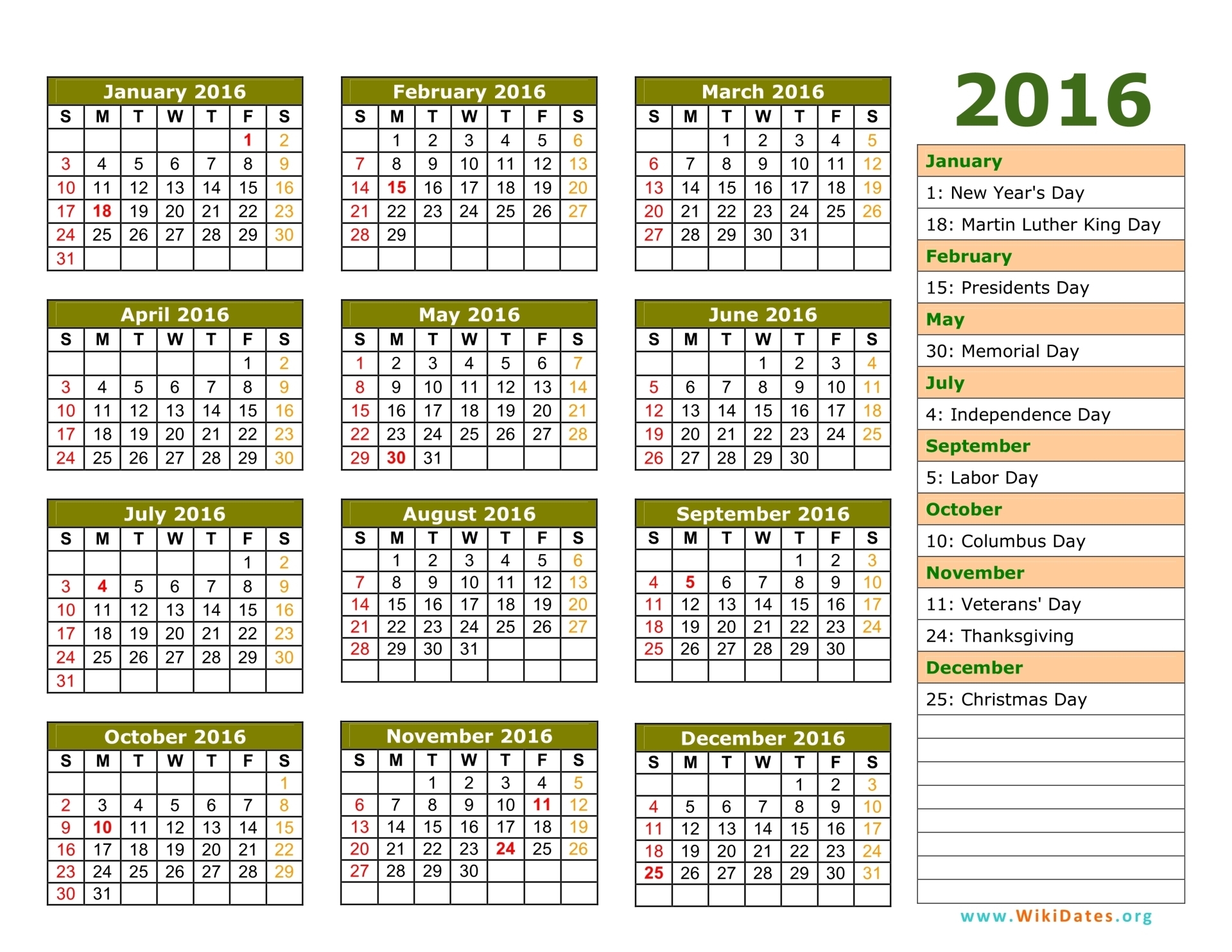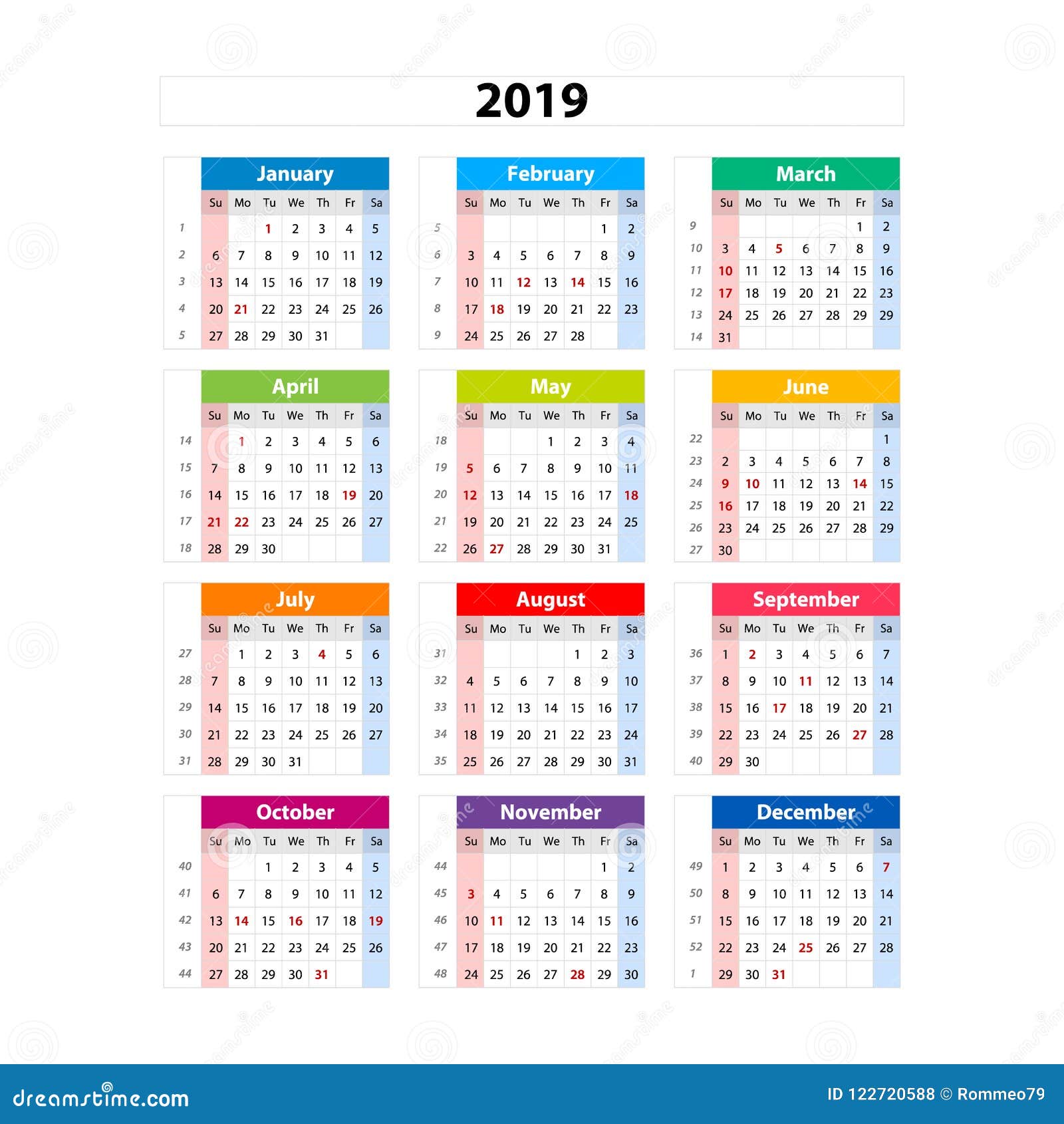

From the Data pane, drag Sales to the Columns shelf.On the Rows shelf, click the '+' icon on ISOYEAR(Order Date) to expand out ISOQUARTER(Order Date).From the Data pane, drag Order Date to the Rows shelf.Change the default calendar to ISO-8601 Week-based. Right-click the data source in the Data pane to open the Date Properties dialog box.Open Tableau Desktop and connect to the Sample-Superstore saved data source.
#Week number calandar how to
Many retail and financial systems divide ISO-8601 quarters into three segments of 4-4-5 weeks, though other segment systems also exist.įollow along with these steps to learn how to implement a 4-4-5 calendar in Tableau Desktop. The ISO-8601 week-based calendar doesn’t use months.
#Week number calandar iso
For example, even though the ISO-8601 doesn’t use months, truncating the ISO date at 'month' displays the first iso-week of the Gregorian month. Truncates an ISO-8601 date to the nearest ISO level. The result is a Gregorian date unless you use the iso-year, iso-quarter, iso-week, or iso-weekday date parts. The result a Gregorian date unless you use the iso-year, iso-quarter, iso-week, or iso-weekday date parts. For example, adding one month to an ISO-8601 date results in the iso-week changing. The result truncates an ISO-8601 date to the nearest ISO level if non-ISO-8601 date parts ( day or month) are used. The following date functions are compatible with the ISO-8601 week-based calendar. Monday is 1, Tuesday is 2, through to 7 for Sunday. ISO-8601 weekdays always start on Monday and are represented as single digits. The ISO-8601 week-based calendar doesn’t use numerical days (such as the 14th or 23rd). Each week belongs to single year, unlike the Gregorian calendar which permits weeks to extend across years. Long years have 53 weeks, short years have 52 weeks. See Create a 4-4-5 calendar.Īll weeks in the ISO-8601 week-based calendar have exactly 7 days and start on a Monday. Many retail and financial systems divide ISO-8601 quarters into three segments of 4-4-5 weeks, though other "month" patterns also exist. The last quarter has either 13 weeks (in a short year) or 14 weeks (in a long year). The first three quarters in the ISO-8601 always have 13 weeks. Each ISO-8601 year is either a long or a short year, with 52 or 53 weeks, depending on when the ISO-8601 year begins. This can cause some discrepancy in years between the two calendar systems around those dates. Gregorian calendars always start the year on January 1. This means the year may start anywhere between December 29 and January 4. ISO-8601 years always start on the first Monday closest to January 1. Not all date levels are relevant in a fiscal calendar. Differences between ISO-8601 and Standard Gregorian calendars In the shelf, right-click a date dimension (Ctrl-click on Mac), and select ISO-8601 Week-Based.

Set the Default calendar field to ISO-8601 Week-based.įor each date field on the shelf, you can set the calendar type separately.Right-click (control-click on Mac) the data source in the Data pane to open the Date Properties dialog box.

To set the ISO 8601 calendar for a data source, follow these steps: This makes the ISO-8601 calendar popular when calculating retail and financial dates.

Unlike the Gregorian calendar, ISO-8601 calendars have a consistent number of weeks in each quarter and a consistent number of days each week. ISO-8601 calendars divide dates into years, quarters, weeks, and weekdays. The purpose of the ISO-8601 calendar is to provide a consistent and clear method to represent and calculate dates.


 0 kommentar(er)
0 kommentar(er)
